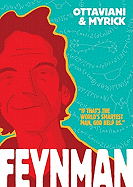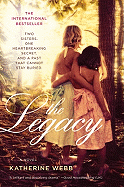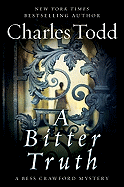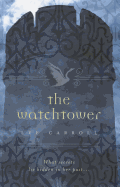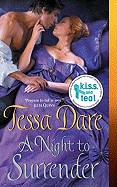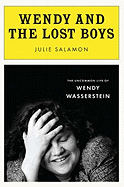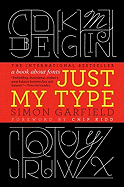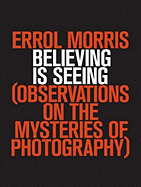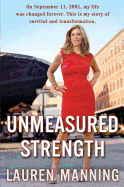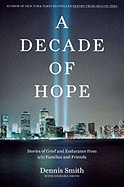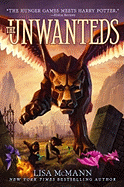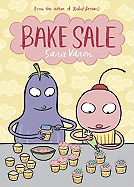Normally quarterly results reported by Barnes & Noble late in August would be of interest mainly to sales and finance types in the book world. But these are not normal times. People took notice on Tuesday when the nation's largest bookseller said that sales of digital items--its Nook e-reader, Nook accessories and e-books--rose 140%, and that Nook business should top $1.8 billion this year. 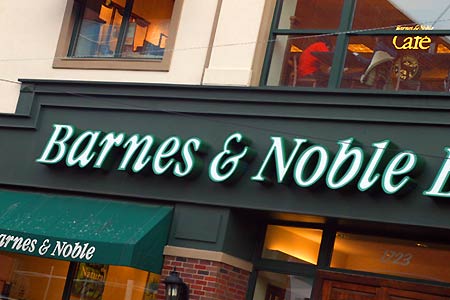 That wasn't all the news. B&N's website, which sells printed books as well as digital products, also did nicely: sales rose 37% and e-book sales quadrupled. Oh, and the company says it has nearly a third of the e-book market. Wall Street--not a fan lately of traditional media retailers--liked all these trends and promptly bid up B&N stock by 15%.
That wasn't all the news. B&N's website, which sells printed books as well as digital products, also did nicely: sales rose 37% and e-book sales quadrupled. Oh, and the company says it has nearly a third of the e-book market. Wall Street--not a fan lately of traditional media retailers--liked all these trends and promptly bid up B&N stock by 15%.
All that indicates that B&N has turned a corner in its effort to be a player in the e-book revolution and will not follow its onetime rival, Borders, into oblivion. The trends also mean that there will be real competition on the digital playing field, that it won't be an Amazon monopoly. This is important because the Kindle is the one e-reader that doesn't "share" with others and because Amazon tends to, shall we say, play rough.
By the way, B&N's shift doesn't mean that its stores are going away. It's easy to forget that about 80% of books sold continue to be traditional books, and the stores have been a big help in B&N's digital push: many Nooks have been sold in person to store customers. Perhaps most important, the stores continue to show their value as a kind of showroom, introducing readers to the great books that continue to be published, regardless of the changes buffeting the business.
This is all good news for publishers and authors, for most bookstore competitors of B&N--and ultimately for readers.
Happy reading! --John Mutter
Bohemian Girl
by Terese Svoboda
Enslaved by a Pawnee to settle one of her father's bets, 12-year-old Harriet clings to the promise of someday being reunited with her family. Ankles hobbled, she is forced into hard labor, biding her time until she realizes freedom will come only with escape, which she finally is able to accomplish.
Harriet's journey across the Great Plains during the Civil War years is neither romantic nor gratuitously violent; it is simply her reality, from hungry nights alone to run-ins with soldiers and chance meetings with other wanderers. Although quick thinking and a level head serve Harriet well, 19th-century Nebraska offers no safe haven.
The American West of Bohemian Girl, Teresa Svoboda's second novel in the University of Nebraska's Flyover Fiction series, is both harsher and more ordinary than that portrayed by Hollywood. Harriet is not caught up in an Indian raid or lured by pimps; instead, she is involved in the more personal conflict of staying alive without losing her "true self." Svoboda (a published poet and winner of the Graywolf Nonfiction Prize) weaves her varied talents into Bohemian Girl, infusing her prose with poetry and her fiction with truth. From the first page, readers will be drawn to Harriet's perspective ("If I look into the perfect face of the river, with no rock to make a muscle in its flow or tree stump to divide it, I see Pa in it") and will later marvel that even after years of sacrifice she can still pause to watch the "quail skitter up in the new evening-pale light" along the river. --Candace B. Levy, freelance editor blogging at Beth Fish Reads
Discover: A beautifully written tale of 19th-century Nebraska told from the perspective of a young woman caught between her loneliness for her family and her strong sense of responsibility.
The Book of Life: Stories
by Stuart Nadler
"The line between humor and sadness is especially thin," says one very perceptive character in Stuart Nadler's dazzling debut story collection. Fans of the short fiction of Philip Roth, Ethan Canin and Michael Chabon will recognize the guilt, regret and obligations that the Jewish sons in these seven tales carry with them as they battle the pressures from enveloping families to be better boys than their surging passions will allow them to be. Nadler writes of a newer generation than Roth, Canin and Chabon do, one in which estranged brothers go beyond silent standoffs of resentment into actually punching each other, in which mistresses up to no good tell their older lovers, "I'm smarter than you are." Old timers in these tales may still favor passive-aggressive methods, but the youngsters just spit out things like, "I really wish you hadn't married that woman" and "Never buy your mistress something your wife doesn't already own.... It's bad karma."
Those fighting to escape the stranglehold of tradition find transgressive liberation in betrayal, substance abuse and revenge schemes. Blessedly dark ironic humor is a supreme talent that Nadler displays in telling these tales. On the return portion of tense trip together, a teenage son volunteers to take the wheel of the car. "You don't know how to drive," his father says, to which the son replies, "I don't know if you were paying much attention on the way up here, but neither do you." This heartfelt collection ends with the line, "Oh, you and your doubts." Perfect! --John McFarland, author
Discover: A dazzling debut short story collection replete with characters wrestling with guilt and regret but fighting for lives with humor, spirit and the odd transgression.
The Legacy
by Katherine Webb
After spending weeks on the U,K. bestseller lists, Katherine Webb's debut novel has arrived here. This is a beautifully written, enthralling tale--part historical novel, part present-day intrigue of buried family secrets, tied together seamlessly without sacrificing either of the two parallel tales at its heart.
Sisters Erica and Beth have been willed the Calcott mansion by their deceased witch of a grandmother, Meredith. As children, they spent summers with Meredith, who harbored a furious hatred for a local band of kindly gypsies--but why? The sisters haven't been back to the estate in more than 20 years, not since their animal-torturing bully of a cousin Henry disappeared. Erica is determined to unravel the secret of Henry's decades-old disappearance, if only to save the sanity of the slowly unraveling Beth.
Meanwhile, alternating chapters take us back to the stunning, fragile Caroline (Meredith's mother) in 1900s Oklahoma. We watch, transfixed, as she morphs from a loving, sensitive beauty into a bitter, self-centered wreck. The circumstances and choices leading to Caroline's downfall are gripping, especially given how her behavior affects her descendants years later.
As spellbound as you will be by the authentic mood, perfect setting and fascinating characters in this tremendous novel, Webb's ending packs a punch that doesn't disappoint. --Natalie Papailiou, author of blog MILF: Mother I'd Like to Friend
Discover: Katherine Webb's phenomenal novel about family secrets, shocking betrayal and the legacy they leave behind.
Mystery & Thriller
A Bitter Truth
by Charles Todd
Mother-and-son writing team Charles Todd (the Ian Rutledge series) delivers the third in the Bess Crawford series. Bess, a World War I nurse and sometime amateur sleuth, is trying to make her way home on leave at Christmas when she discovers a battered and crying woman huddled on her London porch in the freezing rain. Of course Bess takes her in, and is persuaded to accompany Lydia back to her husband's family home. A smattering of domestic violence is just the beginning; the family is haunted by past losses, at odds with one another and thrown further off-kilter by the question of a possibly missing and possibly illegitimate child. Bess's hesitant commitment to Lydia and her family will follow her to the front lines of the war in France and back again, to the tense, almost haunted family estate where her own life will be endangered before all is resolved.
Todd paints a remarkable, poignant wartime scene of people quietly seething with tragedy and loss, stoically soldiering on, with layers of disinherited and heroic minor characters. Bess is a well-developed character: strong, brave and imperfect, she has involved herself beyond her intentions and proprieties in this story. Two male friends raise the question of a romance in the reader's mind, but Todd is not ready to answer it yet.
This is a well-constructed and understated historical mystery. Fans of Jacqueline Winspear's Maisie Dobbs mystery series, in particular, will want to read A Bitter Truth immediately. --Julia Jenkins, librarian and blogger at pages of julia
Discover: A quiet but fully wrought WWI mystery involving war orphans, family dynamics and nurse Bess Crawford's good intentions.
Science Fiction & Fantasy
The Watchtower
by Lee Carroll
In 2010, Carroll's Black Swan Rising introduced readers to Garet James, a young jewelry designer who discovered her female ancestors had been guarding the boundaries between our world and the supernatural for centuries. This revelation came, not by coincidence, just as she met and began to fall in love with a vampire named Will Hughes, who wound up stealing a magical artifact from her and running off to Paris to try to find his way into the Summer Country and shake off his curse. The Watchtower opens shortly after Garet's own arrival in Paris, as she seeks help from the French fairy kingdom in tracking down her lover.
Carroll (the husband-and-wife team of Carol Goodman and Lee Slominsky) alternates Garet's contemporary adventure with flashbacks to Will's human life in early 17th-century Europe, where he falls in love with Garet's fairy ancestor Marguerite. Desperate to be with her forever, Will seeks the help of the evil magician John Dee--not knowing that Marguerite is willing to become a mortal to be with him. (John Dee is a real historical figure, as is his accomplice Cosimo Ruggieri; the novel also includes coy references to "the poet" from Stratford Marguerite dumps to be with Will.) Eventually, the two plotlines intersect, but their resolution is largely open-ended--and though The Watchtower can just about hold its own as a story at the surface level, so much of its emotional resonance depends on knowing what happened to Garet and Will in Black Swan Rising that readers essentially need to bet all or nothing on the planned trilogy. --Ron Hogan, founder of Beatrice.com
Discover: A thriller writer and a poet continue their clever integration of folklore and the real-life historical pursuit of magical power with supernatural romance.
Romance
A Night to Surrender
by Tessa Dare
Tessa Dare, author of Goddess of the Hunt and A Lady of Persuasion, sets her latest historical romance in the charming and idyllic utopia of Spindle Cove. That's "utopia" in its purest, historical form, as in, "it's a nice idea, but it's never going to work," because Spindle Cove is home to eccentric spinsters and damaged debutantes, but almost no men. Susanna Finch has created an oasis in which women who don't naturally conform to society's strictures are free to be their "best" selves, with no fear of censure. Free, that is, until Victor Bramwell, the Earl of Rycliff, arrives on the scene with plans to raise a militia in the village. This sends the ladies into a tizzy, and the man himself has a similar effect on Susanna.
The first in the Spindle Cove trilogy, A Night to Surrender features a feisty heroine with education and experience to back up her independence. In providing us with Susanna's background, Dare gives us a glimpse into the world of Regency medicine that is handled relatively lightly but still proves to be distinctly unsettling. That world is also a perfect backdrop for juxtaposing the physical and emotional limitations that the main characters impose upon themselves and others. Watching them push each other beyond those limitations makes for a truly satisfying read. A portion of the proceeds from the sale of A Night to Surrender will be donated to the Ovarian Cancer National Alliance, making this the opposite of a guilty pleasure. --Judie Evans, librarian
Discover: A Regency romance about the boundaries we set for ourselves, and the joy we find in surpassing them.
Graphic Books
Feynman
by Jim Ottaviani and Leland Myrick
Jim Ottaviani writes and Leland Myrick illustrates the story of Richard Feynman, Nobel Prize-winning physicist, deep thinker and colorful character. Pieced together from the many books Feynman himself dictated and published, as well as several family primary sources, Feynman is a tour de force in the nonfiction graphic novel genre, written in the first person from Richard Feynman's own perspective.
The distinctive presentation of both Feynman's life and perspective through Ottaviani's well-written dialogue and Myrick's finely drawn illustrations gives readers a particularly personal insight into one of the smartest men in the field of science. The graphic novel begins with Feynman's recollection of being a child, encouraged to think and engineer and play with science by his father. The book moves on through Feynman's life during World War II, working on the Manhattan Project, his "discovery" of quantum electrodynamics theories, his lectures and tours of the world, his love of women and other thinkers of his generation, to his long-planned but never consummated trip to Tannu Tuva.
Not one to suffer fools gladly, Richard Feynman found ways to "play" with math and theories of physics and science, inventing new ways of seeing the universe as well as new ways of representing the theories pictorially. This is the best kind of story for presentation in graphic novel form as the words and pictures work in concert to produce as a whole something more than either can do separately. --Rob LeFebvre, freelance writer and editor
Discover: A must-read nonfiction graphic novel from the perspective of one of the most interesting and intelligent scientists of our time, Richard Feynman.
Nonfiction
Wendy and the Lost Boys: The Uncommon Life of Wendy Wasserstein
by Julie Salamon
Once upon a time a playwright could dine out every night in Manolo Blahniks and buy herself a three-bedroom co-op on Central Park West--if that playwright was Wendy Wasserstein. In Wendy and the Lost Boys, veteran journalist Julie Salamon documents the emotional formation and bright-lights career of the first woman playwright to win the Pulitzer Prize and an unshared Tony Award (for The Heidi Chronicles).
Wasserstein, a gifted quipster, wrote funny-serious plays and essays that captured the angst of female baby-boomers struggling to integrate professional ambition with romance and reproduction. Wasserstein's autobiographical themes were so relatable and her physical aspect was so unintimidating that people presumed instant sisterhood, but the real Wendy was elusive. She maintained relationships with scads of "best friends," a clutch of high-profile relatives, a smattering of hapless suitors and a stable of theater world colleague-confidants, many of them gay, some of whom she referred to as her "husbands." Salamon, a reporter and author of Hospital, reveals how carefully Wasserstein stage-managed her public life by doling out selective versions of her persona, while freely pillaging the confidences of her intimates for material. Her biggest secret--the lymphoma that ended her life at 55--remained hidden until the last moment.
The biography is a bit over-detailed on Wasserstein's early career, but the arc of her life is fascinating, starting with her mother, the scene-stealing, implacable Lola, who set an example of secretiveness and claimed that she would have been just as happy if her prize-winning daughter had married a lawyer. The role of traditional husband proved uncastable for Wasserstein, but her triumphant career, her intense relationships and the achievement of single motherhood at the age of 48 fulfilled her own requirements for a remarkable life. --Holloway McCandless, blogger at Litagogo: A Guide to Free Literary Podcasts
Discover: The theatrical life and career of Wendy Wasserstein, the first woman playwright to win a Pulitzer Prize.
Just My Type: A Book About Fonts
by Simon Garfield
Simon Garfield (Mauve; The End of Innocence) does not set out in Just My Type to make anyone who uses Times New Roman as a default font feel unadventurous, but he succeeds in doing precisely that in this witty book about thousands of cooler alternatives. He even goes so far as to direct everyone to the online questionnaire What Type Are You? Chances are you aren't really Times New Roman--you might even be Futura.
Garfield presents debates that have been raging since Gutenberg invented movable type. Beatrice Warde, doyenne of good type during the first half of the 20th century, declared, "The most important thing is that (a typeface) conveys thought, ideas, images, from one mind to other minds." Traditionalists feel that new fonts should not flaunt their novelty; Neville Brody (designer of ground-breaking magazines like the Face and Arena) strongly disagrees--he creates fonts that are as far from wallflowers as you can get. The bias for clarity and readability at the expense of audacious personality continues to this day.
Monotype and Linotype machines of the late 1800s marked a revolution in commercial typesetting, but the introduction of Letraset in 1961 brought font choices into the crafty hands of people like you and me; by 1963, 35 fonts were available on those rub-off pages of type. And 1961 also brought us the IBM Selectric typewriter, which allowed the user to switch typefaces by switching Typeballs. And then came computers, with a bazillion font options. But how to choose? Brody helps by presenting the fonts many people love, along with the ones people really, really hate.
Is there a power font, one that brings certain success, you ask? Opinions differ (graphic designers pride themselves on very fine distinctions) but many favor Gotham for communicating honesty, fairness and integrity. Barack Obama's presidential campaign used Gotham in all its materials, and just look at what happened. Can font choice really affect destiny? Brody notes that Hillary Clinton's campaign often used the more stodgy New Baskerville. My default has now been reset! --John McFarland
Discover: A lively, informative survey of 560 years of typefaces and font choices that will probably make you select a font that is much more you.
Believing Is Seeing: Observations on the Mysteries of Photography
by Errol Morris
Academy Award-winning documentarian filmmaker Errol Morris (Tabloid; The Thin Blue Line), brings an unusual perspective to Believing Is Seeing: Observations on the Mysteries of Photography--his first book, a collection of essays--that investigates the relationship between photographs and reality.
Two childhood experiences that deeply affected Morris influenced his approach to the subject. His father died when he was very young, and Morris would come to know him (later) only through studying photographic images of him. Morris also suffered an eye ailment, which ultimately altered his visual perceptions. Thus, an inquisitive, skeptical visual philosopher emerged. It is no wonder that Morris has undertaken a forensic examination that explores how photographs have the power to reveal and conceal and thereby convey certain truths and frauds.
Morris dissects notable documentary photographs--a photograph of three children discovered in the hand of a unknown soldier in Gettysburg; cannonballs on a landscape during the Crimean War; children's toys photographed amid the rubble of the Israeli-Lebanese War; the iconic image of the hooded man that emerged from Abu Ghraib, among others. The book delves into the intentions of a photographer in relation to images themselves; how photography can be manipulated and used as propaganda; how words that accompany a photograph can change visual context; and even how photographs can serve as a source of memory. With fascinating insight, Morris investigates and interviews experts in the visual arts, as if putting each notable photographic specimen on trial and encouraging readers to render their own verdicts. --Kathleen Gerard, blogger at Reading Between the Lines
Discover: An observant, in-depth exploration that probes the visual sincerity and veracity of notable photographs.
Unmeasured Strength: A Story of Survival and Transformation
by Lauren Manning
Cantor Fitzgerald partner Lauren Manning was running late on the morning of September 11, 2001, rushing for the elevator in the lobby of the North Tower when the plane hit. Her life was spared, but her survival was far from a sure thing: she was burned over much of her body and it took years of rehab to recover. Most people would crumble under that kind of pain and hardship, but not Manning. She wasn't afraid to demand transfer to a burn unit from the ER--anyone who's worried about being a bother to medical pros or who hesitates to disagree with a doctor should take lessons. If she and her husband, Greg, hadn't insisted on a move from St. Vincent's to a hospital with more specialized facilities, she might not have been alive to write this memoir.
Her story was chronicled in Love, Greg and Lauren, a 2002 compilation of e-mails from her husband updating friends and family on her condition. By contrast, Unmeasured Strength is in Manning's own voice and goes a long way in conveying the sheer moxie it takes to recover from such a horrific injury. But her aggressiveness is balanced by her willingness to push her body to its limits to ensure her recovery, and that's what makes Unmeasured Strength so inspiring. The details of her injuries are graphic and she's blunt about the unpleasant realities of what she suffered. There's no grand return to corporate America. But Manning has the chance to see her son grow up, and that's triumph enough to make this a memoir quite moving. --Kelly Faircloth, freelance writer
Discover: Inspiration for any tough task in this 9/11 memoir, whether it's recovering from an injury, training for a marathon or taking it to the next level at anything.
A Decade of Hope: Stories of Grief and Endurance from 9/11 Families and Friends
by Dennis Smith and Deirdre Smith
A Decade of Hope is a follow-up to Smith's Report from Ground Zero, which was written shortly after the 9/11 attacks and chronicled the rescue efforts. Scheduled to coincide with the 10th anniversary of the tragedy, this book is a collection of interviews with survivors and those who lost loved ones. Firefighters are well represented among the stories, which isn't surprising given Dennis Smith is also the author of Report from Engine Co. 82 and a former firefighter. But he's spoken to an array of people: Michael Burke, who tells about his fight for what he sees as a fitting memorial for his brother; Rudy Abad, a Muslim who lost her son, an EMT, when he rushed to the WTC to help; the MacRaes, who lost their daughter Cat, a recent college grad working for a financial company.
The result is somewhat disorganized, with no solid narrative; instead, it's a raw, brutal testament to lives lost on 9/11. Nor does the book steer clear of controversy. Some of the interviewees have thrown themselves into activism in the decade since the attacks, and their views are presented unfiltered and without comment. The so-called "Ground Zero Mosque" is referenced by several of the contributors (often unfavorably). Sally Regenhard, who lost her son, criticizes the Port Authority's lack of adherence to code. But Smith also offers uplifting stories like that of Captain Jay Jonas, whose crew stopped to rescue an elderly woman and so were sheltered in a central stairwell when the North Tower collapsed. A Decade of Hope doesn't make for easy reading, but it does bear witness to the lingering effects of a tragedy both national and intensely personal. --Kelly Faircloth, freelance writer
Discover: A heart-wrenching but ultimately uplifting chronicle of how families and first responders have coped in the decade since 9/11.
Children's & Young Adult
The Unwanteds
by Lisa McMann
In her first book for middle-graders, Lisa McMann (the Wake trilogy) creates a magical adventure that serves as a worthy successor for fans of Harry Potter. The author introduces us to Quill, a land whose governors label artistic children "Unwanted" and deport them to the Death Farm. On the morning of the government's annual Purge, the governors separate the Stowes, who are 13-year-old identical twins: they keep Aaron ("Wanted") and ship Alexander ("Unwanted") off to die. High Priest Justine warns that "creativity [leads] to revolt," which doesn't faze law-abiding Aaron. He will serve her and her Quillitary, an army of Wanteds, and co-exist with the Necessaries (the sect to which his parents belong), who must perform menial labors.
The Unwanteds do not undergo the fate they expect at the Great Lake of Boiling Oil, however. Instead, they are spared by Mr. Today, a mage who has been saving children for decades. He invites them to Artimé, where artists are not punished but rather rewarded and their gifts nurtured. While Quill is colorless and flooded with suspicion, Artimé is vivid and inspires a feeling of security. If their magical world were ever to be unveiled, the residents of Artimé would be prepared to battle with the Quillitary--which would pit Alexander against Aaron.
McMann creates a spectrum of well-defined worlds, peopled with characters that resemble archetypes yet retain original qualities. Stunning fight sequences make use of unique weapons such as slam-poetry charms and origami dragons that breathe fire. This masterpiece delivers a new spin on what it means to be wanted. --Adam Silvera, a bookseller and an intern at Figment.
Discover: A middle-grade dystopia where drawing in the mud gets you banished to the Death Farm. What's on the other side?
Bake Sale
by Sara Varon
Sara Varon (Robot Dreams) once again proves that reaching one's personal goals can also benefit the community. The charming and resourceful stars of her picture book Chicken and Cat transformed a vacant lot into a community garden. In this six-chapter graphic novel, best friends Cupcake and Eggplant collaborate and encourage each other to achieve their dreams. Cupcake rises at 6:30 each morning and walks to the Sweet Tooth Bakery. He starts a pot of coffee and bakes until his display cases are full. Two thin legs support his yellow-wrapper middle and a pink frosted head with a beret-like cherry cap. He polishes the awards on his wall, which attest to his talents ("2006 Best Fruit Pie," "2008 Most Perfect Cookie"), not to mention the personal testimonials. Tomato, picking up a special order, tells him, "My gardening club goes crazy for your carrot cake." After work, Eggplant (balanced on matching purple legs) picks up Cupcake for band practice. "The 4th of July parade is right around the corner," Eggplant reminds him.
The buddies head around the corner to Eisenstein's Sandwich Shop (which those familiar with Manhattan's Flatiron district will recognize as Eisenberg's, right down to the Russian bookstore on the second floor). As Carrot waits on the pair, Eggplant tells Cupcake about his Aunt Aubergine in Turkey, his plans to visit her, and her new cookbook, which he shares with Cupcake. When Cupcake discovers that Aunt Aubergine and Turkish Delight, a famous pastry chef, are business partners, he can think of little else. He decides to save up for a ticket to travel with his friend, and Eggplant helps him make some hard choices to scrape together airfare. Everything about this confection speaks to cooperation. Eggplant covers the occasional Saturday at the Sweet Tooth so Cupcake can raise the extra cash for the trip. Over the seasons, the resourceful baker taps into community events, making animal-shaped marzipan treats for the Blessing of the Animals on St. Francis of Assisi Day in October, cupcakes with British and American flags for a big November boxing match, and dog biscuits for February's Westminster Dog Show, and sets up a table outside the events.
Because Varon ties her compositions to such a concrete reality, she makes it seem perfectly plausible that a soda can could walk a Dalmatian and a parrot would perch on its strawberry owner. Fellow band members include Brown Egg, Avocado and Donut, and, at a Russian and Turkish bath house, a red beet (think Borscht) hands out towels to Eggplant and Cupcake. When Eggplant loses his job, Cupcake comes through for him. This humorous and heartwarming tale celebrates good food, true friendship and their ripple effects throughout a city neighborhood (with seven fairly simple recipes so readers can get started, too). --Jennifer M. Brown, children's editor, Shelf Awareness
Discover: A humorous and heartwarming tale that celebrates good food, true friendship and community togetherness (recipes included).
Fall Mixed Up
by Bob Raczka, illus. by Chad Cameron
From the first page of Raczka's (Guyku) latest picture book, we're aware that something isn't right: "Every Septober/ Every Octember/ Fall fills my senses with/ scenes to remember." For young listeners familiar with the seasons, this charmer throws all sorts of mismatches their way, and they will want to call them out as you read together.
The minimal rhyming text on each spread attempts to explain what's happening in the corresponding pictures. A few of the scenes may need explanation, but this will bring bursts of recognition from older children and help them confirm what they know about autumn. The art brims with humor and imaginative perspectives (a bear gathers nuts from the treetops, and the tree bends over; a scene on a football field shows a huge player tackling another player who's using a baseball mitt to catch the football). Cameron (A Day with No Crayons) uses predominantly reds, golds and browns, along with shadowy night scenes of sitting around a campfire or trick-or-treating. Humor abounds in the off-kilter illustrations, but they also present an opportunity to help kids sort out what's right (and wrong) about fall. Stuffing and drumsticks as treats on Halloween? Putting gloves on our ears? Caramel pumpkins? In fact a lot of things aren't right! Many of the examples will likely initiate a discussion about fall, and children are sure to add some of their own favorite fall things. --JoAnn Jonas
Discover: An exploration of mixed-up seasonal fall scenes, with text and pictures that challenge readers to find the mistakes.


